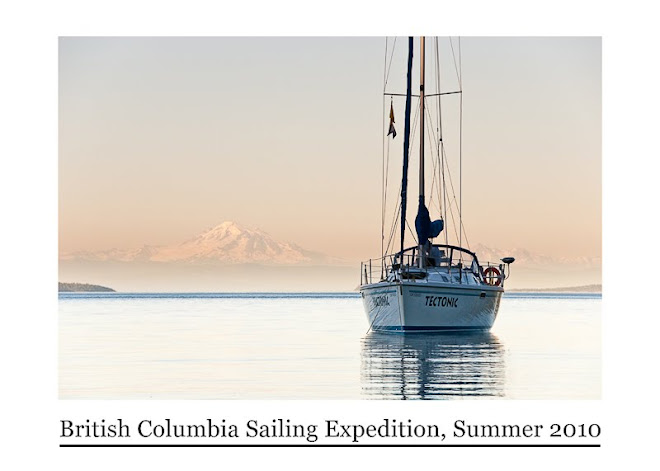BCSE On-Campus Skills Checklist
You must be able to accomplish the following skills by the time you have completed the on-campus courses. This is not an academic exercise for which you will be receiving a grade. Instead, it is necessary that you be able to complete 100 percent of these skills to function as a productive, safe and effective member of the ship’s crew.
Sailing Skills
1. Identify the following parts of the boat:
a. Bow/Stern
b. Port/Starboard
c. Forestay/backstay
d. Shrouds
e. Mainsail/Jib
f. Mast/Boom
g. Halyard/Sheet
h. Leech/Luff
i. Tack/Clew
j. Boom Vang
k. Winch/Cleat/Block
l. Keel/Rudder
m. Telltales
2. Use three sources to identify wind direction and speed.
3. Identify when a boat is on the following points of sail and how to trim the sails when:
a. Head to wind
b. Close Hauled
c. On a close, beam and broad reach
d. On a run
e. Tacking or gybing
4. Differentiate between windward and leeward
5. Describe when and how you would tack or gybe
6. Describe the forces that affect a sailboat, including the center of effort and the center of lateral resistance, apparent and true wind
7. Explain the difference between weather and lee helm. Describe how to adjust the sails to reduce/increase both forces.
8. Identify the three factors that affect the sails’ power and lift. Describe at least one way of controlling each of these factors.
9. Describe when and how to reef a mainsail and jib
10. Discuss the steps used to recover a crew overboard
11. Identify a safe anchorage on the chart given the day/night weather forecast
12. Calculate the scope and swing room for a specific anchorage and set the anchor alarm
13. Tie the following knots with relative ease:
a. Figure eight stopper knot
b. Clove hitch
c. Round turn two half hitches
d. Bowline
e. Cleat Hitch
f. Coil and gasket a line
14. Identify the stand-on vessel and give-way vessel and know how to resolve the following:
a. Two sailboats on a head-on course
b. Two sailboats on same course, windward and leeward
c. One boat overtaking another
d. Sailboat and a power boat on a crossing or head-on course
e. Two power boats on a crossing or head-on course
Navigation Skills
1. Locate the scale, sounding unit, variation (and annual increase/decrease), publication date and special notes on a chart
2. Use the bearing worksheets to convert from true north to ship’s compass and vice versa
3. Shoot a compass bearing
4. Locate ship’s position on a chart by:
a. plotting an electronic fix
b. shooting two or more LOP’s
5. Interpret a tide table - both reference and secondary stations
6. Interpret a current table – both reference and secondary stations
7. Calculate actual depth using chart datum and tide tables for daily high and low tides
8. Plot a DR, calculating for distance, time and speed
9. Use a DR and electronic fix to account for current set and drift and wind leeway
10. Determine a course to steer given desired course over ground, set, drift and leeway
11. Make an accurate logbook entry
12. Identify the following chart symbols:
a. Lateral buoys – cans and nuns
b. Lateral Day Beacons
c. Cardinal buoys
d. Fair water buoy
e. Isolated danger buoy
f. Preferred passage buoy
g. Submerged rock or reef
h. Bottom type – sand, gravel, mud, rock
i. Submerged cable
j. Current – ebb and flow
VHF Skills
1. Use proper radio protocol to:
a. Undertake a radio check with another vessel
b. Hail another vessel and switch to a working channel
c. Transmit a Mayday
d. Obtain the marine weather forecast
skip to main |
skip to sidebar
Pages
Trip To Do's - Parents
- 1) Ensure that your child has a passport that will be current this summer. Submit the passport number and expiration date to Mr. Cole by May 1.
- 2) Complete the "Parent Permission form for International Travel of Minors" form, have it notarized and submit to Mr. Cole no later than May 1. Follow the link below to access the form.
- 3) Subscribe to this blog with your prefered RSS feed to keep updated on trip requirements and events.
Trip To Do's - Students
- 1) Start thinking about and researching your student presentation topic. Have fun with this one!
- 2) Read through the On-Campus Skills Checklist Page above. You will be quizzed on Sailing Skills #1,2,3 and Navigation Skills #13 a-f on the first day of on-campus classes.
- 3) Start reading through the BCSE Handbook.
Related Links
Contact
Please email Andrew Cole



